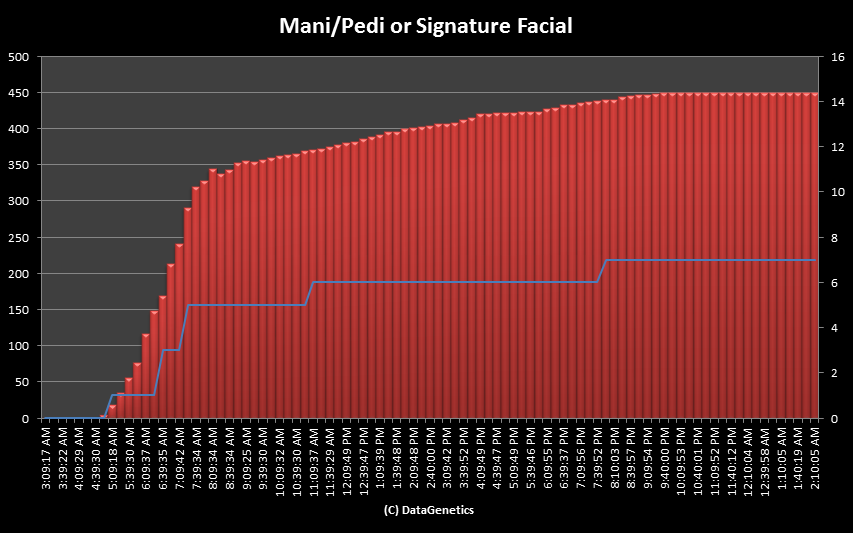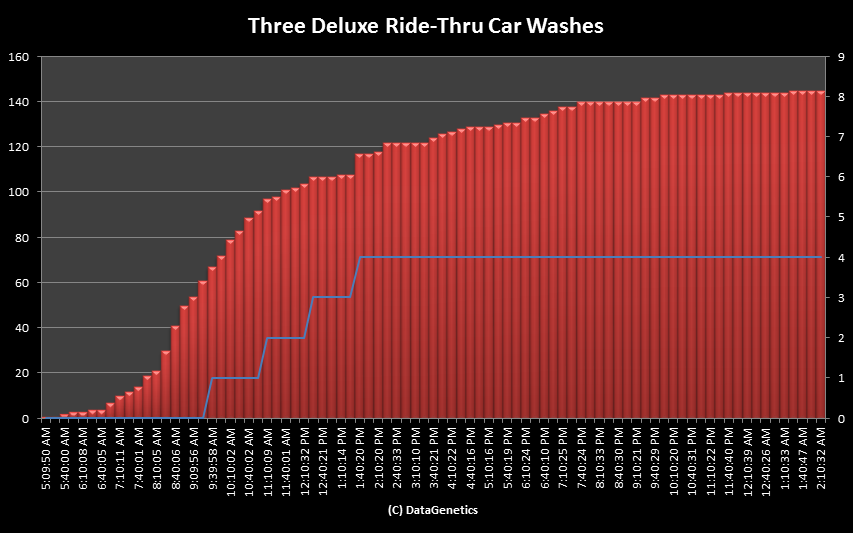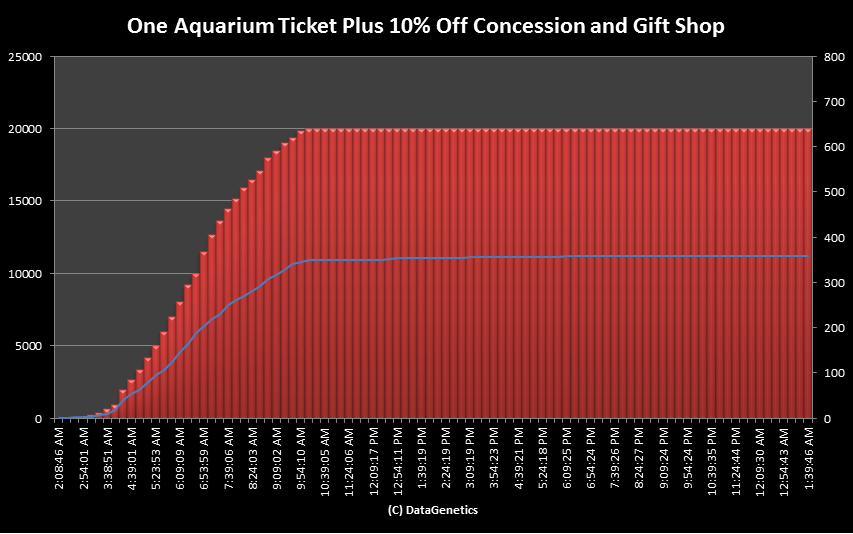Deal-a-Day Deluge
There’s currently a deluge of daily deal sites on the web. I’m not just talking about the well-known examples like Groupon, LivingSocial and Tippr. At the time of writing this blog a quick, non-exhaustive, search uncovered close to 1,000 sites in the US alone.
That’s just too many. Some will consolidate and coalesce. Some will get purchased, but I suspect that most will die through lack of oxygen. How many auction sites can you name? Exactly! How many deal-a-day sites do you visit? How many of these sites will still be operating in 12 months?
What’s starting to happen now is that we’re getting aggregators. These creative entities have realized that people won’t visit hundreds of sites looking for deals. The aggregators take feeds (pushed or pulled) from all the individual offer sites and publish one master list, creating a sort of 'Yahoo! for daily deals' catalog. These middle people ride on the shoulders of the hard work done by the sales staff of the leaf-node deal sites and, hopefully, make revenue from the fact that traffic floods in their direction. Getting tidal waves of users is a clichéd internet business model, “Hey, if we have millions of active users we’re bound to think of a way to monetize them eventually!”
(Ask Twitter, I think they might even have a patent on the idea!)
One of my favorite jokes from the early dot.com days was:
 | Question: | “Hey, do you know what URL stands for?” |
| Answer: | “Yes, Ubiquity now, Revenue Later!” |
It's déjà vu all over again!
Deal sites are big business
For end customers, there’s really nothing to lose in partaking in an offer. At best, it’s free money (if the offer was for something you were going to consume anyway), and at worst it’s a heavy discount of an impulse purchase.
According to BIA/Kelsey, the deal-a-day market is expected to grow from $873 million last year to $1.24 billion in 2011, and rising to $3.9 billion by 2015. (Having said that, I still think it was a pretty bold move by Groupon when they turned down the $6 billion purchase offer they received from Google.)
 |
Whilst it’s expensive for retailers (the ones who end up paying for the discount) to participate in these deal programs, it’s not all bad news. A recent Hitwise survey suggested that 87% of deal purchasers were satisfied enough with the products and services they received that they said they would patronize the establishment again without an offer. It sounds like deals can be pretty efficient lead generators. This, however, can be a doubled edged sword: If it’s easy to acquire customers with deals, it will probably be just as easy for your competition to steal them away with similar offers. It’s pretty hard for brand loyalty to resist the massive gravitational pull of a half price offer from the next hungry vendor selling the same item. |
Categories
I think it’s possible to categorize the deals into two basic flavors:
- Impulse (local)
- Commodity (global)
Impulse deals tend to be non-essential purchases, and opportunistic in nature. You would not normally have thought about, for instance, trying the local Sushi Restaurant, or buying two dozen donuts, but hey, for 50% off you would. These whimsical purchases will continue to be the bread and butter of the deal sites. Because of the nature of these deals, they tend to be local. There’s evidence to show (details in the Anatomy of a Deal section below) that people log into their favorite the deal services first thing in the morning to see what today’s special is, and make a spontaneous decision to participate: The fastest uptake on offers is typically within the first couple of hours of the launch.
The second category of offers is less sexy; these are discounts for items that, even with a deep discount, you’d not purchase unless you had a need. (Hoarders aside, I don’t know if there are many people who would purchase a large quantity of toilet tissue, salt, or soap, if they didn’t have an immediate need). These deals will eventually evaporate from the deal-a-day services and migrate over to the coupon sites, who already perform this task admirably. Coupon sites are great – If you don’t use them you’re being foolish and spending more than you should. Before any substantial purchase, it takes just a few seconds to check for coupons, and often you’ll be pleasantly surprised by the bonus discount. (Human nature always seems to make bonus discounts taste exceptionally sweet; the feeling that you’re beating the system or have inside knowledge). Sometimes it’s a free shipping code, other times it’s a non-trivial discount on the order (the clever retailers tier the coupons they offer to get you to spend more on your order). There are a couple of large coupon sites, but to be honest, these are trawled so regularly by the major search bots that it’s easier to simply type “discount coupons for godaddy” (or whatever) than remember the URL for an appropriate coupon site.
Occlusion of transparency
 |
Up until a few days ago Groupon, like the other deal services, exposed details of the uptake of their offers. However, in a recent blog post they announced that they would be obfuscating the true numbers, citing some waffle about it being competitive information. Who are they kidding? What’s wrong with the truth? Anytime anyone wants to hide or bucket data it’s because they are a little embarrassed with the raw reality. Clearly Groupon does not like the fact that analysts can currently, reasonably precisely, calculate the revenue associated with each deal and form an impression of the value of their company. <Sarcasm> Anyone would think they are trying to IPO </Sarcasm> |
What can we expect in the future?
My prediction is that the successful deal-a-day services will start to offer HyperLocal deal services. Smartphones know their location, so a hybrid of a location based service with offers will push deals into your life. As you walk down the street, or drive down the road, compelling offers will be broadcast in your direction, encouraging you to purchase. Offers are far more compelling that simple adverts; they have a tangible value to customers. Location based adverts are just intrusive, location based offers could be captivating (especially if the app allows users to filter the categories of offers pushed in their direction).
 |
The typical roulette game of "Where should we go for dinner? which traditionally garners responses like "I don't know" and "I don't care", could soon be answered with "Let's go wherever there is 50% discount". According to IDC, by 2015, more people will be accessing the internet using a mobile device than from a desktop. The smart HyperLocal services will perform real time back-end analytics to find out the demographics, affinities, and past purchases of successful conversions and target the offers to others that match smilar profiles. The even smarter HyperLocal services will dynamically price their offers (incentivized through revenue sharing between the parties) to maximize revenue … offering just enough discount to persuade you to participate, but not enough to leave money on the table. |
I’m sure we all remember the scene in Minority Report where Tom Cruise walks past the adverts and they speak to him, but that only goes part of the way. Adverts can be used for more than just creating long-term brand awareness; they can be used to create immediate compulsion to purchase. The shorter the distance you can put between the advert and the sale, the smaller the time the victim has to think about changing his mind.
A company that does all these well will certainly be worth more than $6 billion to Google.
Anatomy of Deal
Over the last few weeks, I’ve been tracking the deals offered by LivingSocial.
 |
I collect the number of sales every 15 minutes (the frequency at which LivingSocial updates their statistics), along with the number of cumulative FaceBook shares for each offer at that time. Here’s an example from a deal in Omaha for either a Medi/Pedi or Signature Facial at Garbo’s Salon and Spa for just $37 (a saving of 50%!) The graph below shows the uptake of the offer, with time on the x-axis (PST). Sales of the offer are depicted by the red bars (and use the left y-axis of the chart). FaceBook shares are depicted by the blue line (and use the right y-axis of the chart). |

450 treatments were sold with this offering.
There is a rapid uptake of the offer first thing in the morning with over half of all the sales occuring by 9:00am local time (7:00 am PST). Users appear to be logging in, checking the daily deals, and responding swiftly. They've been trained to come back on a daily basis to check what is available and, if they are interested, respond promptly. (Because of the mechanics of the offers, if you get in early and share the deal with your friends, and three of them also take the offer, your purchase will be free. This, of course, encourages voracius virality and has the side effect that the early you get into the deal, the better your chances of having your link selected be someone downstream, and the better your chance of a freebie.)
Here's another example for Three Deluxe Ride-Thru Car Washes that was offered in Portland for $15.00 (a 50% savings). Again you can see the rapid uptake in the morning, and a slowing down by midday.

Some of LivingSocials deals run for more than one day. Below is an offer for Four Weeks of of Kids' Gym Classes in Phoenix for $35.00 (a saving of 56%). Not surprisingly, there is a flat-plateau in the sales every night when most are sleeping, and orders start to come in again the following morning. The first morning for the offer produces the largest sales.

 |
Some offers are restricted by a sales cap. The New England Aquarium offered a 65% discount deal ($8.00 for a $22.95 admission ticket, plus a 10% discount off the concession and gift shop, but placed a limit of 20,000 offers on the deal. As you can see, this offer rapidly sold out. |

More charts
 |
 |
 |
Want to see more charts of other offers? Click Here |
You can find a complete list of all the articles here. Click here to receive email alerts on new articles.
Click here to receive email alerts on new articles.

